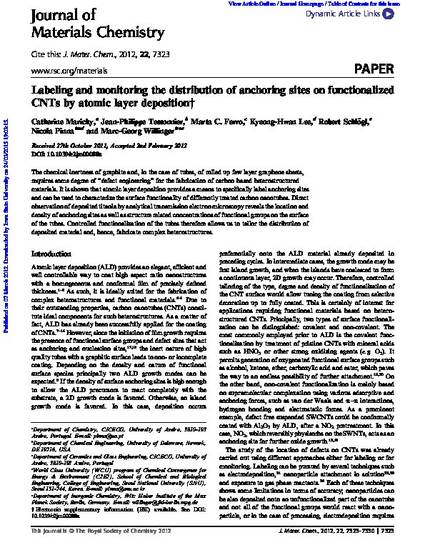
The chemical inertness of graphite and, in the case of tubes, of rolled up few layer graphene sheets, requires some degree of "defect engineering" for the fabrication of carbon based heterostructured materials. It is shown that atomic layer deposition provides a means to specifically label anchoring sites and can be used to characterize the surface functionality of differently treated carbon nanotubes. Direct observation of deposited titania by analytical transmission electron microscopy reveals the location and density of anchoring sites as well as structure related concentrations of functional groups on the surface of the tubes. Controlled functionalization of the tubes therefore allows us to tailor the distribution of deposited material and, hence, fabricate complex heterostructures.
- analytical transmission electron microscopy,
- carbon-based,
- chemical inertness,
- defect engineering,
- deposited materials,
- few-layer graphene
Available at: http://works.bepress.com/jean-philippe_tessonnier/7/
